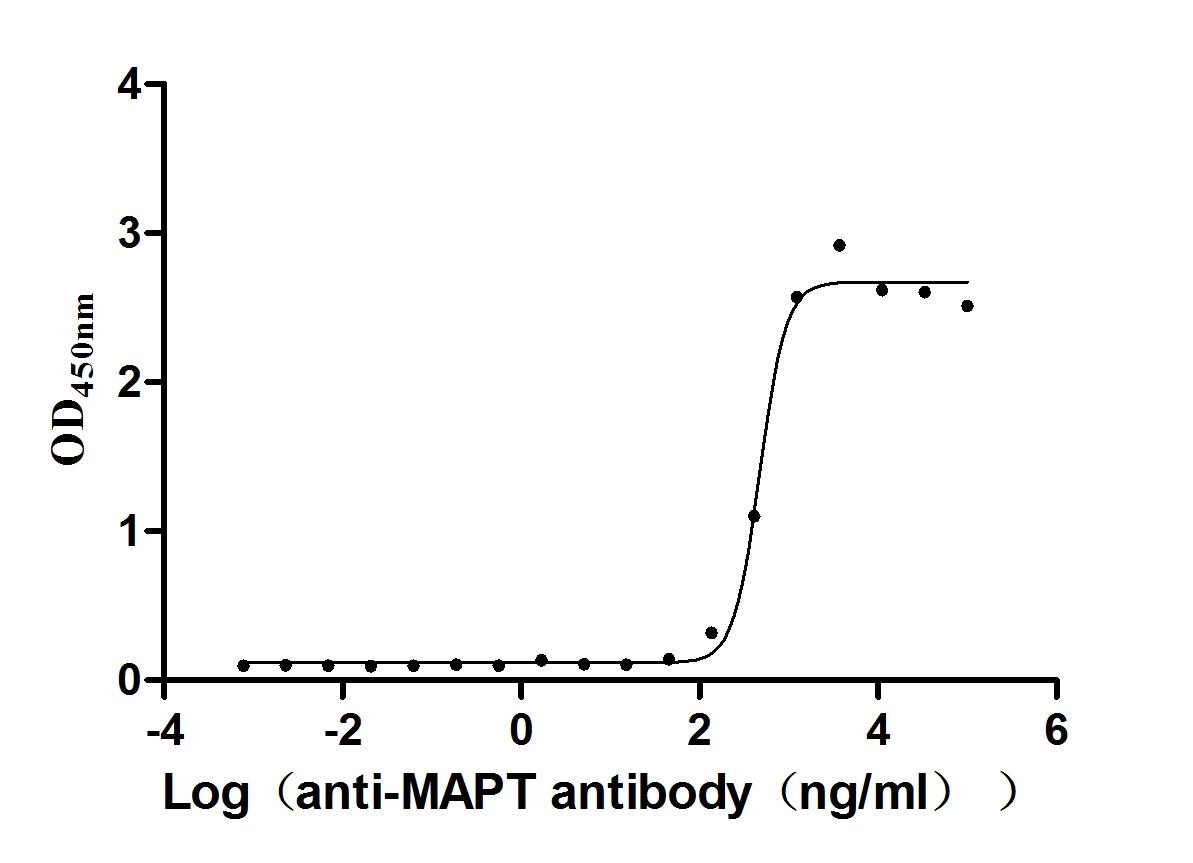Recombinant Human E3 ubiquitin-protein ligase Hakai (CBLL1)
-
中文名稱(chēng):Recombinant Human E3 ubiquitin-protein ligase Hakai(CBLL1),Yeast
-
貨號(hào):CSB-YP755210HU
-
規(guī)格:
-
來(lái)源:Yeast
-
其他:
-
中文名稱(chēng):Recombinant Human E3 ubiquitin-protein ligase Hakai(CBLL1),Yeast
-
貨號(hào):CSB-EP755210HU
-
規(guī)格:
-
來(lái)源:E.coli
-
其他:
-
中文名稱(chēng):Recombinant Human E3 ubiquitin-protein ligase Hakai(CBLL1),Yeast
-
貨號(hào):CSB-EP755210HU-B
-
規(guī)格:
-
來(lái)源:E.coli
-
共軛:Avi-tag Biotinylated
E. coli biotin ligase (BirA) is highly specific in covalently attaching biotin to the 15 amino acid AviTag peptide. This recombinant protein was biotinylated in vivo by AviTag-BirA technology, which method is BriA catalyzes amide linkage between the biotin and the specific lysine of the AviTag.
-
其他:
-
中文名稱(chēng):Recombinant Human E3 ubiquitin-protein ligase Hakai(CBLL1),Yeast
-
貨號(hào):CSB-BP755210HU
-
規(guī)格:
-
來(lái)源:Baculovirus
-
其他:
-
中文名稱(chēng):Recombinant Human E3 ubiquitin-protein ligase Hakai(CBLL1),Yeast
-
貨號(hào):CSB-MP755210HU
-
規(guī)格:
-
來(lái)源:Mammalian cell
-
其他:
產(chǎn)品詳情
-
純度:>85% (SDS-PAGE)
-
基因名:CBLL1
-
Uniprot No.:
-
別名:c-Cbl-like protein 1; CasBrM (murine) ecotropic retroviral transforming sequencelike 1; Casitas B-lineage lymphoma transforming sequence-like protein 1; Casitas B-lineage lymphoma-like 1; Casitas B-lineage lymphoma-transforming sequence-like protein 1; cbll1; E3 ubiquitin-protein ligase Hakai; Ecadherin binding protein E7; FLJ23109; HAKAI; HAKAI_HUMAN; MGC163401; MGC163403; OTTHUMP00000206720 ; OTTHUMP00000206722 ; OTTHUMP00000206724 ; RING finger protein 188; RNF188
-
種屬:Homo sapiens (Human)
-
蛋白長(zhǎng)度:full length protein
-
表達(dá)區(qū)域:1-491
-
氨基酸序列MDHTDNELQG TNSSGSLGGL DVRRRIPIKL ISKQANKAKP APRTQRTINR MPAKAPPGDE EGFDYNEEER YDCKGGELFA NQRRFPGHLF WDFQINILGE KDDTPVHFCD KCGLPIKIYG RMIPCKHVFC YDCAILHEKK GDKMCPGCSD PVQRIEQCTR GSLFMCSIVQ GCKRTYLSQR DLQAHINHRH MRAGKPVTRA SLENVHPPIA PPPTEIPERF IMPPDKHHMS HIPPKQHIMM PPPPLQHVPH EHYNQPHEDI RAPPAELSMA PPPPRSVSQE TFRISTRKHS NLITVPIQDD SNSGAREPPP PAPAPAHHHP EYQGQPVVSH PHHIMPPQQH YAPPPPPPPP ISHPMPHPPQ AAGTPHLVYS QAPPPPMTSA PPPITPPPGH IIAQMPPYMN HPPPGPPPPQ HGGPPVTAPP PHHYNPNSLP QFTEDQGTLS PPFTQPGGMS PGIWPAPRGP PPPPRLQGPP SQTPLPGPHH PDQTRYRPYY Q
-
蛋白標(biāo)簽:Tag?type?will?be?determined?during?the?manufacturing?process.
The tag type will be determined during production process. If you have specified tag type, please tell us and we will develop the specified tag preferentially. -
產(chǎn)品提供形式:Lyophilized powder
Note: We will preferentially ship the format that we have in stock, however, if you have any special requirement for the format, please remark your requirement when placing the order, we will prepare according to your demand. -
復(fù)溶:We recommend that this vial be briefly centrifuged prior to opening to bring the contents to the bottom. Please reconstitute protein in deionized sterile water to a concentration of 0.1-1.0 mg/mL.We recommend to add 5-50% of glycerol (final concentration) and aliquot for long-term storage at -20℃/-80℃. Our default final concentration of glycerol is 50%. Customers could use it as reference.
-
儲(chǔ)存條件:Store at -20°C/-80°C upon receipt, aliquoting is necessary for mutiple use. Avoid repeated freeze-thaw cycles.
-
保質(zhì)期:The shelf life is related to many factors, storage state, buffer ingredients, storage temperature and the stability of the protein itself.
Generally, the shelf life of liquid form is 6 months at -20°C/-80°C. The shelf life of lyophilized form is 12 months at -20°C/-80°C. -
貨期:Delivery time may differ from different purchasing way or location, please kindly consult your local distributors for specific delivery time.Note: All of our proteins are default shipped with normal blue ice packs, if you request to ship with dry ice, please communicate with us in advance and extra fees will be charged.
-
注意事項(xiàng):Repeated freezing and thawing is not recommended. Store working aliquots at 4°C for up to one week.
-
Datasheet :Please contact us to get it.
相關(guān)產(chǎn)品
靶點(diǎn)詳情
-
功能:E3 ubiquitin-protein ligase that mediates ubiquitination of several tyrosine-phosphorylated Src substrates, including CDH1, CTTN and DOK1. Targets CDH1 for endocytosis and degradation. Associated component of the WMM complex, a complex that mediates N6-methyladenosine (m6A) methylation of RNAs, a modification that plays a role in the efficiency of mRNA splicing and RNA processing. Its function in the WMM complex is unknown.
-
基因功能參考文獻(xiàn):
- The present study demonstrated for the first time that knockdown of Hakai inhibited the proliferation, migration and invasion of nonsmallcell lung cancer cells, and sensitized nonsmallcell lung cancer cells to cisplatin. PMID: 29786107
- findings suggest that the E3 ubiquitin-ligase, such as Hakai, may be a better target than proteasome for using novel specific inhibitors in tumor subtypes that follow EMT. PMID: 28675930
- These results suggest that stabilization of delta-catenin by Hakai is dependent on Src. PMID: 28069439
- these observations suggest that the dimeric architecture of the HYB domain is essential for the phosphotyrosine-binding property of Hakai. PMID: 25074933
- By lowering Hakai abundance, miR-203 also reduces Hakai-regulated-cell division. PMID: 23285092
- Hakai dimerization allows the formation of a phosphotyrosine-binding pocket that recognizes specific phosphorylated tyrosines and flanking acidic amino acids of Src substrates, such as E-cadherin, cortactin and DOK1. PMID: 22252131
- Hakai mediates E-cadherin ubiquitination and degradation triggered by Slit-Robo signaling during colorectal epithelial cell carcinogenesis. PMID: 21283129
- Together, these data do not support a requirement for CBLL1 during flavivirus entry and rather suggest an essential role of the ubiquitin/proteasome pathway for flavivirus genome amplification. PMID: 21191016
- Results suggest that Hakai is a novel corepressor of ERalpha and may play a negative role in the development and progression of breast cancers. PMID: 20608937
- Results suggest that Hakai is an important regulator of cell proliferation and that Hakai may be an oncoprotein and a potential molecular target for cancer treatment. PMID: 19535458
顯示更多
收起更多
-
亞細(xì)胞定位:Nucleus speckle. Nucleus, nucleoplasm. Cytoplasm.
-
數(shù)據(jù)庫(kù)鏈接:
Most popular with customers
-
Recombinant Mouse Microtubule-associated protein tau (Mapt) (Active)
Express system: Mammalian cell
Species: Mus musculus (Mouse)
-
Recombinant Human Claudin-4 (CLDN4)-VLPs (Active)
Express system: Mammalian cell
Species: Homo sapiens (Human)
-
Recombinant Macaca fascicularis CD93 molecule (CD93), partial (Active)
Express system: Mammalian cell
Species: Macaca fascicularis (Crab-eating macaque) (Cynomolgus monkey)
-
Recombinant Human Cadherin-17 (CDH17), partial (Active)
Express system: Mammalian cell
Species: Homo sapiens (Human)
-
Recombinant Human Oncostatin-M (OSM), partial (Active)
Express system: Mammalian cell
Species: Homo sapiens (Human)















